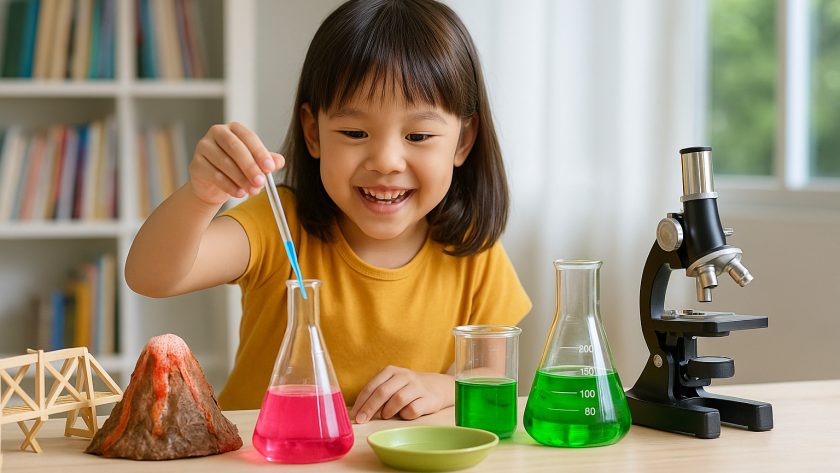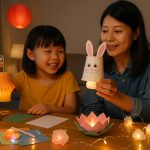Curiosity doesn’t need much to bloom. The right activity, the right question, or the right setting can spark a child’s fascination with how the world works. Science, Technology, Engineering, and Mathematics (STEM) aren’t abstract fields confined to textbooks. They are alive in museums, gardens, kitchens, and recycled toy bins. For parents in Singapore seeking meaningful ways to engage their children in STEM, the options are both accessible and impactful.
Hands-On Learning in the City
1. Science Centre Singapore
The Science Centre Singapore transforms theory into experience. More than 1,000 exhibits take concepts like magnetism, electricity, and mechanics and turn them into interactive stations. KidsSTOP™ caters to children aged eight and below with themed zones like Flight & Space and Nature. There’s also the “Science-on-the-Move” program, where children conduct experiments such as slime-making and pH testing. Events like the STEM Fiesta bring science shows and activity booths to life, often with free public entry.
2. ArtScience Museum
Located at Marina Bay Sands, this museum merges artistic thinking with scientific ideas. The ArtScience Laboratory hosts daily hands-on workshops without the need for an admission ticket. Topics include sustainability, design, and motion, all approached through creative building, drawing, and testing.
STEM in Nature
3. Jacob Ballas Children’s Garden
Inside the Singapore Botanic Gardens, this garden is designed for children to learn through nature. It includes a mini-farm, orchard, forest trail, and water play area. Children witness the water cycle in action through mist zones, streams, and splash buckets, making abstract science visible and tangible.
4. Nature Playgardens
Built with natural materials, these play spaces promote sensory learning and exploration. HortPark, Pasir Ris Park, and Jurong Lake Gardens feature adventure stations that encourage movement, problem-solving, and collaboration. Jurong’s playgarden has 13 such zones for climbing, balancing, and imaginative scenarios.
5. Wild Parks and Trails
Places like Bukit Timah Nature Reserve, Sungei Buloh Wetland Reserve, and Chestnut Nature Park allow children to observe native plants and animals. Nature walks become biology lessons in real-time, offering firsthand experience with ecosystems, food chains, and plant diversity.
Simple Science at Home
You don’t need special tools or a lab bench. Common items in the home are enough to explain some of the most fascinating phenomena.
6. Kitchen Chemistry
- Baking Soda and Vinegar Volcano
Teach chemical reactions using household ingredients. The fizzing effect is a direct result of acid-base interaction. - Lemon Juice Invisible Ink
Write a secret message, then reveal it with heat. It demonstrates how organic acids oxidize when heated.
7. Engineering Projects
- Bridge-Building Challenge
Use popsicle sticks and tape to build structures. Then add weight to test durability and stability. - Spaghetti Towers
Compete to build the tallest tower using dry spaghetti and marshmallows. Great for understanding load-bearing and design logic. - Balloon-Powered Cars
Create a simple car from recycled cardboard, straws, and a balloon. The expanding air teaches motion and propulsion basics.
8. Slime and Polymers
Making slime is fun, but it also teaches about polymers and non-Newtonian fluids. Varying the amounts of activator or glue changes the texture and consistency, turning playtime into a study of matter states.
9. Observation Experiments
- Liquid Density Columns
Pour different liquids like oil, syrup, and water into a clear glass. Then drop objects in to see which layer they settle in. - Colored Flower Absorption
Place a white flower in colored water. Watch over hours as the petals slowly take on the color, showing capillary action.
10. Virtual Experiments
Companies like 3M offer online experiment videos conducted by scientists using simple tools. These guides are ideal for kids curious about cause and effect, hypothesis testing, and recording outcomes.
Structured STEM Programs
For children eager to dive deeper, enrichment programs offer consistency and depth.
11. Coding and Robotics
- Coding Lab
Teaches logic and programming basics using games and robots. Preschoolers begin with drag-and-drop logic. Older kids progress to full coding platforms like Python. - The School of Robotics & Code Ninja
Offers sessions where children build and code robots, preparing them for competitions and project-based learning.
12. General Science Programs
- The Learning Lab & Newtonshow
These centers blend MOE syllabus concepts with hands-on lab work. Topics like electricity, magnetism, or human biology are turned into practical experiments with real equipment. - MindChamps Science
Introduces children to thinking scientifically by asking questions, forming hypotheses, and using observation to gather answers. - Engineering For Kids
Introduces applied problem-solving through activities like building roller coasters or programming basic games.
13. STEM Holiday Camps
These short-term, high-intensity programs give children a chance to explore different branches of STEM through immersive activities. Often themed around space, animals, or invention, they combine storytelling with structured scientific thought.
How These Activities Help
- Develop Critical Thinking
STEM activities often involve trial and error. Children learn to adjust, test again, and think differently. - Improve Focus and Patience
Building a spaghetti tower that stands takes time and care. Coding a robot to follow commands takes precision. Each task builds mental stamina. - Encourage Curiosity
Asking “why did that happen” is the core of scientific thinking. Each experiment, activity, or walk through the garden creates more questions. - Connect Science to Everyday Life
By engaging in daily experiments, children realize that science isn’t limited to labs or classrooms. It’s in the way a plant drinks, how a bridge holds, or why slime stretches.
Final Thought
STEM doesn’t require a lab coat or expensive equipment. It begins with a question. Singapore offers more than enough sparks for that first question, whether through a museum visit, a recycled paper experiment, or a garden trail. Every activity on this list is a step toward deeper understanding and a habit of learning that grows with the child.



